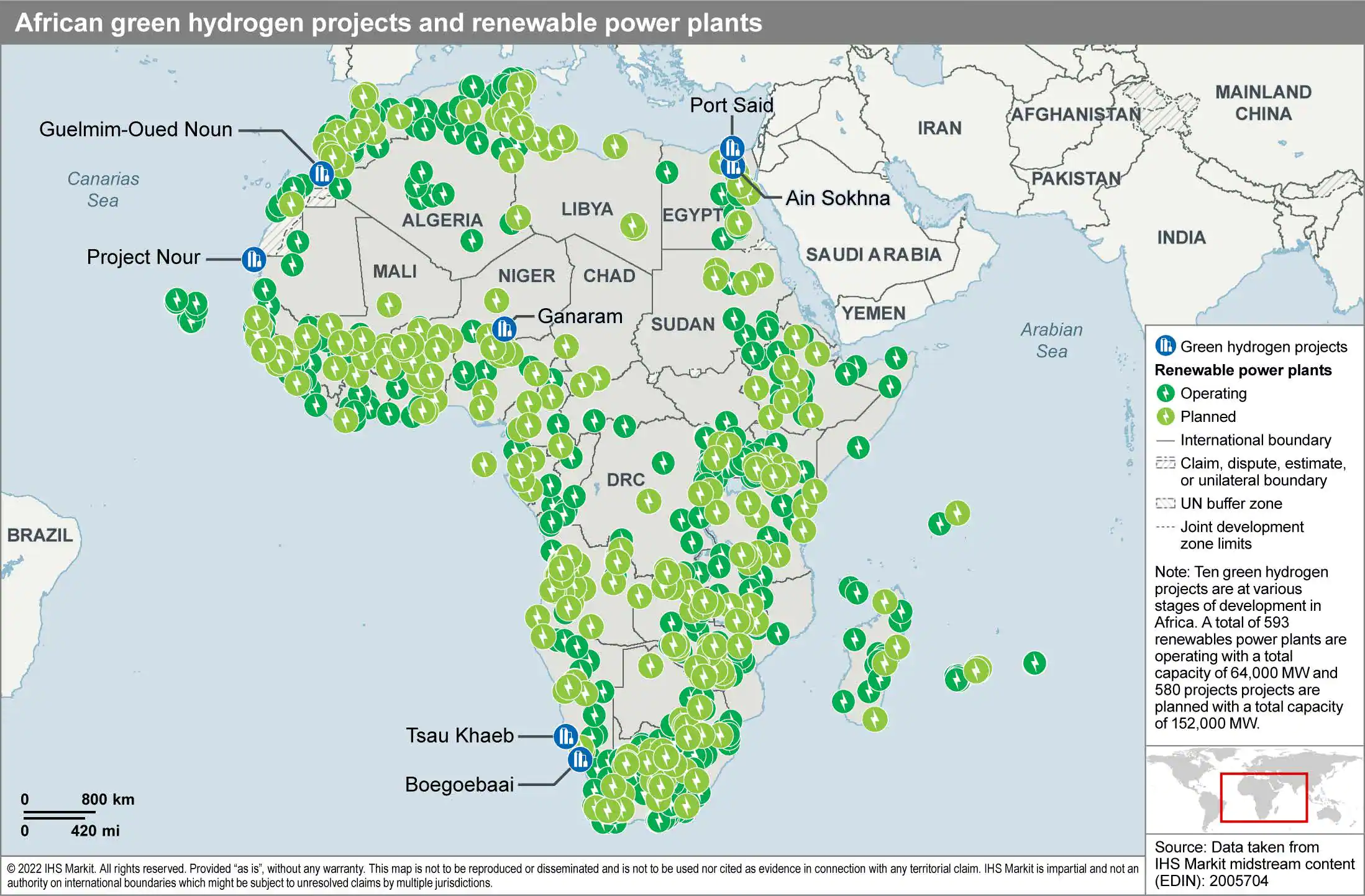Europe has set an ambitious target of producing 10mn tonnes of renewable-based hydrogen by 2030, and importing the same amount — and, as so many times before, it is looking to Africa to supply the resources it needs.
Africa has “extraordinary green hydrogen potential”, according to a joint EU/Africa Union report. But any proposed projects will have to be carefully financed and implemented if the EU is to avoid the colonial mistakes of the past, and ensure that the more than 600mn Africans with no access to electricity also benefit from the hydrogen economy.
Green hydrogen — made from renewable sources, such as wind and solar — could play a vital role in replacing fossil fuels in hard-to-decarbonise industries, such as steel, chemicals and shipping. “For many industrial sectors and organisations, green hydrogen is the only path to sustainability,” says Donal Cannon, from the non-EU advisory team of the European Investment Bank (EIB), which helped produce the report.
However, production of green hydrogen needs a lot of cheap renewable energy, so sunny climates, such as Africa’s, are typically the best locations. “Africa is likely to be one of the places, along with India and Chile, for instance, where green hydrogen can be produced at scale at the lowest cost,” predicts Cannon.
At the Africa Adaptation Summit in Rotterdam, in 2022, Frans Timmermans, the EU’s climate commissioner, suggested this could make the continent “a powerhouse of the energy of the future”.
Such a vision remains a work in progress, though. Last year, the EU signed agreements with Morocco, Egypt and Namibia to help these countries develop renewable hydrogen and, where possible, to supply the EU. It is also offering budgetary and technical support to Kenya, Mauritania and South Africa to help them explore opportunities for hydrogen development.
Both continents will gain by working together on hydrogen, insist the European Commission and the EIB. The goal is “a partnership of equals with Africa that benefits both African and European citizens”, says the Commission — including, as a priority, those in “local communities in countries where electricity access constraints exist”.
Right now, access to energy in sub-Saharan Africa is the lowest in the world. More than 50 per cent of the population lives without electricity.
But the Commission believes establishing green hydrogen projects in the local economy will contribute to “economic growth, social and political stability, job creation and industrialisation”.
Cannon says: “Projects supported by the EIB will also examine the scaling of energy and water resources to meet local needs and improve social and environmental outcomes for impacted communities.” They will gain access to water from desalination plants and electricity from wind and solar farms.
Not everyone is convinced, however.
If the EU’s hydrogen plans are realised, “they will represent the latest neocolonial resource grab, at a time when renewable resources should be used for local energy needs and climate targets”, argued Corporate Europe Observatory, a Brussels-based non-governmental organisation, after producing a report in May 2022. It concluded that Europe’s green hydrogen targets for Africa were “unrealistic from a cost and an energy perspective”.
Godrej Rustomjee, a just-energy transition analyst at the African Climate Foundation, a think-tank based in South Africa, warns that ensuring mutual benefit for European and African countries presents “a formidable challenge”.
Water use is another consideration. “Many African regions proposed for these projects suffer from water scarcity, and using water for green hydrogen production could exacerbate the strain on infrastructure and water security,” he adds. To try to mitigate this risk, several of the planned projects incorporate desalination plants.
There is also a financing challenge. “In the last decade, the EIB provided a mere €5.3bn for green infrastructure investments in Africa,” points out Rustomjee. “This does not even come close to the scale of resources needed to allow the transition at scale. Just to reach universal electricity access alone, Africa needs $32bn a year.”
Hydrogen projects will cost more. A report published in November 2022 by the Africa Green Hydrogen Alliance, an initiative launched at COP26, and consultancy McKinsey found that creating a hydrogen economy in the Alliance’s six member countries — Egypt, Kenya, Mauritania, Morocco, Namibia and South Africa — would require $450bn-$900bn of investment by 2050.
And transporting green hydrogen from Africa to the EU is still a conundrum. Rather than trying to transport it as a standalone product, it makes more sense to use a carrier fuel in the form of ammonia or methanol, says Rustomjee. But he adds: “In some cases, it may make sense to develop a pipeline between north Africa and Europe.”
The question of “who has the financial muscle to jump in” to the sector in Africa is a further issue, adds Sukhtankar.
In 2020, Siemens inaugurated the first industrial scale, solar-driven green hydrogen facility in the Middle East, in Dubai, but the German engineering group has no immediate plans to engage in Africa on renewable hydrogen. “The biggest challenge is political stability,” says Advait Sukhtankar, vice-president of digitalisation at Siemens Smart Infrastructure, a division of the group that connects energy systems, buildings and industry though technology.
Siemens will keep a close eye on investment decisions by utilities and financial institutions, such as the EIB, before making any decisions. “Hydrogen will definitely take over the sustainability story”, but as far as Africa is concerned, Siemens is “waiting and watching” for the moment, Sukhtankar says.
Cannon acknowledges the extent of the task ahead. The EIB is in “early-stage discussions with promoters and is appraising some projects”, he notes. The institution hopes to have contracts signed for the first green hydrogen projects by the end of the year, but “this may be optimistic given the challenges facing the establishment of complete new value chains”.
Source: Financial Times






